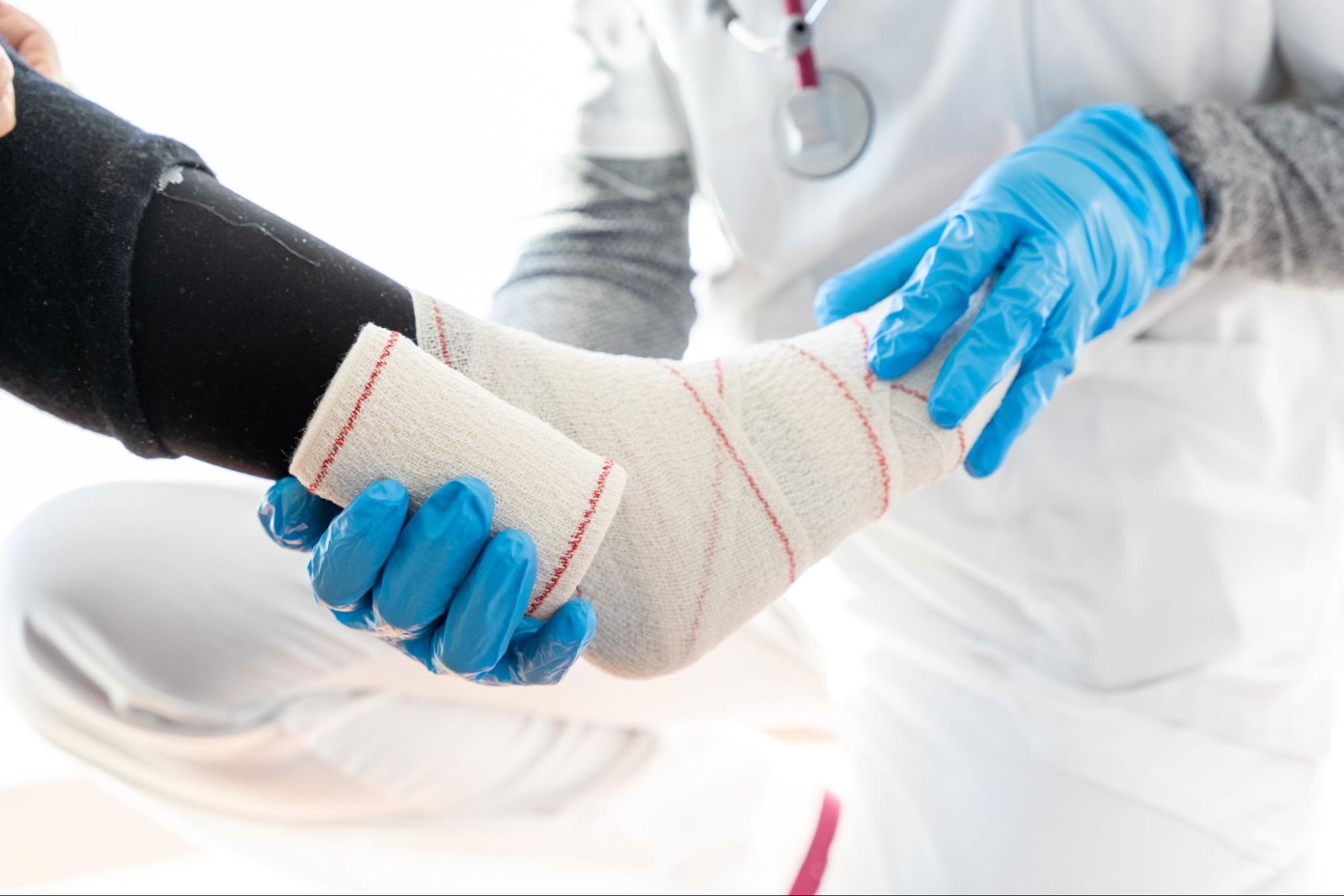
Reducing the Risk of Infection of a Surgical Wound: Tips for Pre- and Post-Operative Care
Surgical procedures, whether minor or significant, carry inherent risks. Among the most concerning complications is surgical wound infection, which can significantly impact recovery, prolong hospital stays, and, in severe cases, lead to life-threatening conditions. Proper pre- and post-operative care is essential in reducing these risks, supporting optimal healing, and ensuring patient safety. In this in-depth guide, we’ll explore proven strategies for minimizing the risk of surgical wound infection from the preparation phase to post-operative management. We’ll also touch on advanced healing techniques, such as amniotic grafts, to accelerate recovery and enhance wound protection.
Understanding Infection of a Surgical Wound
Surgical wound infections—also known as surgical site infections (SSIs)—occur when pathogens enter the incision site during or after a procedure. These infections may affect the superficial skin, deeper tissues, organs, or implanted materials.
Infection of Surgical Wound Symptoms
Signs of surgical wound infection can include redness or swelling at the incision site, warmth or tenderness, and the presence of pus or discharge. Common indicators include a foul odor, fever or chills, and pain that worsens rather than improves. If not addressed promptly, surgical site infections (SSIs) can spread and lead to more serious complications such as abscesses, sepsis, or delayed wound healing, all of which can significantly impact recovery and overall health.
Why Preventing Infection of a Surgical Wound Matters
According to the CDC, SSIs are among the most common healthcare-associated infections, accounting for nearly 20% of all hospital-acquired infections. In the United States alone, SSIs lead to approximately 300,000 infections annually, contributing to increased healthcare costs and patient morbidity. By implementing a comprehensive wound care protocol, including evidence-based pre- and post-operative measures, the risk of infection can be significantly reduced, improving outcomes and accelerating recovery.
Pre-Operative Tips to Prevent Infection of a Surgical Wound
Preventing infection starts before the surgical procedure begins. Patients and healthcare providers must work together to create a clean, controlled environment and optimize the patient’s health for surgery.
1. Stop Smoking Before Surgery
Smoking impairs oxygen circulation and weakens the immune system, making it more difficult for the body to fight infection and heal wounds. Patients are advised to stop smoking at least four to six weeks before surgery to reduce their risk.
2. Manage Blood Sugar Levels
Diabetic patients have a higher risk of developing SSIs due to impaired immune responses and poor circulation. Proper blood sugar control both before and after surgery can significantly reduce infection risk and promote wound healing.
3. Bathe With Antiseptic Soap
Patients may be instructed to shower with chlorhexidine gluconate (CHG) or another antiseptic soap the night before and the morning of surgery. This antiseptic soap helps eliminate bacteria on the skin and lowers the risk of contamination during surgery.
4. Avoid Shaving the Surgical Site
Although it may seem hygienic, shaving the surgical site can cause micro-abrasions that increase the risk of infection. If hair removal is necessary, clipping is safer than shaving and should be performed by medical staff.
5. Boost Nutrition and Hydration
A well-nourished body is better equipped to fight infection and support tissue repair. Protein, vitamin C, zinc, and adequate hydration are vital weeks before surgery.
6. Address Pre-Existing Infections
Before undergoing surgery, it’s important to identify and treat any existing infections—whether they’re urinary tract infections, skin conditions, or respiratory issues. Entering surgery with a compromised immune system increases the risk of SSIs.
Practices That Support Surgical Wound Infection Prevention
While patients have limited control during the operation, healthcare providers play a vital role in maintaining sterility and minimizing contamination.
1. Adherence to Aseptic Technique
Sterile draping, gloving, and instrument handling are all part of maintaining a clean surgical field. Strict protocols are followed to prevent airborne or contact contamination.
2. Use of Prophylactic Antibiotics
Patients often receive antibiotics shortly before the procedure to prevent bacterial infections. Timing is crucial—antibiotics are usually administered within 60 minutes prior to the incision.
3. Temperature Regulation
Maintaining normal body temperature during surgery can improve blood flow and immune response, reducing the risk of infection. Hypothermia during surgery is linked to higher rates of wound complications.

Post-Operative Tips to Prevent Infection of a Surgical Wound
Post-operative care is just as critical—if not more so—for avoiding complications. Once a patient leaves the operating room, they become responsible for much of their recovery. Here’s how to stay on top of wound care and protect the incision site from infection.
1. Keep the Wound Clean and Dry
Follow your provider’s instructions for wound care, including when to remove bandages, how to clean the wound, and when to resume showering. Avoid submerging the wound in water (baths, pools) until fully healed.
2. Perform Regular Wound Checks
Look for signs of infection, such as redness, swelling, discharge, or heat around the surgical site. Report any changes to your healthcare provider immediately, especially if you experience fever, fatigue, or worsening pain.
3. Change Dressings As Directed
Changing dressings too often—or not often enough—can increase infection risk. Your surgeon or nurse will give clear guidelines on how frequently to replace your dressing and whether you should apply any topical ointments.
4. Avoid Touching the Wound
Avoid touching the surgical site with your hands, as tempting as it may be. If you must change the dressing or clean the wound, always wash your hands thoroughly or wear sterile gloves.
5. Support Healing With Nutrition
Continue a nutrient-rich diet high in protein, vitamins A and C, and minerals like zinc and iron. These nutrients are essential for collagen formation and tissue repair.
6. Protect the Wound From Pressure or Friction
Refrain from wearing tight clothing or placing stress on the incision site. Your provider may recommend protective padding or limited mobility during early recovery in areas prone to movement or pressure—such as the hips, back, or knees.
7. Manage Chronic Conditions Carefully
If you have chronic illnesses like diabetes, heart disease, or autoimmune disorders, be sure to follow your treatment plan closely. Poorly managed conditions can compromise immune function and delay healing.
Advanced Wound Care Techniques to Prevent Surgical Infection
In recent years, amniotic grafts have emerged as a cutting-edge solution for wound healing, especially in complex or high-risk cases. These biologically derived grafts are made from the amniotic membrane of donated placentas, offering a rich source of growth factors, cytokines, and collagen.
Benefits of Amniotic Grafts in Surgical Wound Healing
Amniotic grafts are an advanced wound care option that offer numerous advantages in surgical recovery. Below are some of the key benefits they provide in supporting faster, safer, and more effective healing.
Reduces Inflammation
Amniotic grafts contain natural anti-inflammatory proteins and growth factors that help calm the body’s immune response. This reduction in inflammation can ease pain and create a more stable environment for healing.
Accelerates Tissue Regeneration
Rich in cytokines and essential growth factors, amniotic grafts support the rapid regeneration of skin and soft tissue. This helps surgical wounds close faster and more efficiently.
Minimizes Scar Formation
The biologically active components in amniotic tissue promote organized cell growth, which helps minimize scar tissue development. This is particularly beneficial for surgical wounds in visible or high-mobility areas.
Provides a Natural Antimicrobial Barrier
Amniotic membranes offer inherent antimicrobial properties that help protect the wound from bacterial invasion. This added layer of defense reduces the risk of infection during the healing process.
Supports Healing in Compromised Patients
Patients with diabetes, vascular disease, or other conditions that impair healing often benefit from the regenerative support of amniotic grafts. These grafts enhance the body’s ability to repair tissue even when healing is otherwise difficult.
Amniotic grafts can be applied post-surgery to help reduce infection risk and encourage proper healing, especially in patients with compromised immune systems, chronic wounds, or poor vascular circulation.

When to Call Your Doctor
While mild discomfort and slight redness are common after surgery, specific symptoms should prompt immediate medical attention. You should contact your healthcare provider if you experience persistent or worsening pain, increasing swelling, a fever over 100.4°F (38°C), excessive or foul-smelling discharge, or if the wound edges begin to open or split apart. These signs may indicate a developing infection that requires prompt treatment. Early intervention is key to preventing a mild irritation from progressing into a severe, potentially systemic infection.
Take Control of Your Recovery by Preventing Surgical Infection
Reducing the risk of surgical wound infection is a shared responsibility between healthcare professionals and patients. From preparing your body before surgery to managing your incision afterward, every step matters in preventing complications and promoting a smooth, successful recovery. Stay proactive—follow your provider’s guidance, prioritize hygiene and nutrition, and ask questions whenever you’re unsure. And remember, advancements like amniotic grafts are revolutionizing post-operative care, providing powerful new tools to support healing and protect against infection.
For more tips on surgical recovery, wound management, and the latest innovations in regenerative medicine, be sure to check out the Stem Health Plus blog. We’re here to help you heal better, faster, and with confidence.
